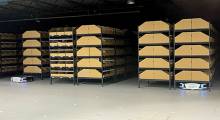Stratasys plans to remove complexity from design-to-3D print processes with its latest release. GrabCAD Print’s Advanced FDM feature is aimed at ensuring design intent via intuitive model interaction to rapidly deliver strong, light parts, Stratasys notes.
By avoiding CAD-to-STL conversion, users are able to work in high fidelity and advance the design-to-3D print process, Stratasys says. Advanced FDM is designed to speed part production, while maintaining creation of purpose-built parts that minimize weight without compromising strength, according to the company.
“For design and manufacturing engineers, one of the most frustrating processes is ‘dumbing down’ a CAD file to STL format, only to require subsequent re-injection of design intent into the STL printing process,” says Mark Walker, lead software product manager at Stratasys. “This software is engineered to do away with this complexity, letting designers reduce iterations and design cycles, getting to a high-quality, realistic prototype and final part faster than ever before.”
With CAD-native build controls, the solution doesn’t require manual generation of complex toolpaths. Intuitive features achieve desired part characteristics through automatic control of FDM build attributes. Engineers select areas on native design geometry and specify design attributes, letting Advanced FDM automatically calculate 3D print toolpaths.
“GrabCAD Print Advanced FDM’s geometry-based workflows have allowed us to fine-tune part builds, meeting application requirements and process parts more quickly than we could before,” says Robert Heath, additive manufacturing application engineer at Eckhart. “The seamless transition of moving a build between applications is easy and intuitive.”
Assigning attributes directly to CAD models, users pinpoint areas of strength and rigidity, control infills, ensure sufficient material around holes with inserts and avoid seams. Since toolpaths are automatically generated from model assignments, the user can expect to spend significantly less time on part setup, without losing strong, high-quality, purpose-built FDM parts.
“Advanced FDM has proved invaluable in improving our part processing time. When processing a very large number of tools and fixtures in a very time pressured environment, it was crucial to ensure stronger tool areas were correct first time, every time,” says Dave Hewitson, rapid prototyping programmer at McLaren. “Advanced FDM negates the requirement for multiple programs, creating a more streamlined process. It’s also allowed us to more effectively control the structure of end-use car parts, something that was previously very difficult with the solutions we had in hand. This means we can get better parts to the track faster.”
GrabCAD’s Advanced FDM is available now via download with GrabCAD Print (from versions 1.24) and is supported on the following Stratasys 3D printing systems: F370, Fortus 380mc, Fortus 380mc Carbon Fiber Edition, Fortus 450mc, Fortus 400mc, Fortus 900mc, and F900.
More Info
Sources: Press materials received from the company and additional information gleaned from the company’s website.
About the Author
Press releases may be sent to them via [email protected]. Follow Robotics 24/7 on Facebook
Follow Robotics 24/7 on Linkedin
Article topics
Email Sign Up
















